ABT Framework Student Resource Page
Round 14 – NPS & FAA
Contents
Sign up to participate in Working Circles
Download previous chat logs (separate page)
Session 1 Resources – Outer Circle
Session 2 Resources – Singular Narrative
Session 3 Resources – Hero’s Journey
Session 4 Resources – Archplot
Session 5 Resources – The Fool with Patty Limerick
Session 6 Resources – Listening with Brian Palermo
Session 7 Resources – Audience as Hero with Park Howell
Session 8 Resources – Genuflect to the Elders with Dianna Padilla
Session 9 Resources – Narrative Spiral with Nancy Knowlton
Session 10 Resources – Narrative is Leadership
The ABT Framework Google Group
Social Media – Keep up with us on the web
Synopsis on Working Circles – If you’re new to Working Circles, start by reading this.
Working Circle Half Hour Schedule – Use this to guide you through how to host your half hour Working Circle.
To complete the class, you must sign up to host 1 Working Circle and sign up to participate in 2 Working Circles.
Sign up to host a Working Circle
- Find an available half hour time slot on this page.
- Email mattmdavid@gmail.com to have your time slot reserved.
- Include the following in your email.
- Day
- Half hour time slot in Pacific Time (PDT).
- Short title for your Working Circle based on your ABT (feel free to make the title catchy/fun/different if you want).
Host responsibilities
- Email your participants your ABT before the Working Circle so they have time to review it – we’ll send you the list of your participants’ email addresses 3-5 days ahead of time.
- You can send your participants a revised ABT of what you originally submitted to class or use a brand new ABT all together.
- During the Working Circle, use the ABT Blue Card and follow the half hour schedule.
- You’re the moderator of the discussion, so do your best to make sure everyone gets a chance to speak and provide input.
- We’ll send you and your participants a Webex link for your Working Circle 3-5 days before you’re scheduled to host, so no need to worry about that.
Participant responsibilities
- Sign up to participate in a minimum of 2 Working Circles. Sign up here.
- Review the ABT that the host sent you ahead of time.
- Be prepared to use the ABT Blue Card and all the tools you’ve learned in class to help the host clarify their narrative.
Sign up to host a Working Circle (see above)
Download the ABT Blue Card – Have it open or printed out and ready for each class.
Watch the AAAS video:
Session 1 Resources – Outer Circle
If you had an ABT Build session and want to get your notes from the chat, then you can download previous chat logs here.
Optional Exercise #1: The 5 Word Problem
“What’s the problem?” is the most common question Randy asks during the ABT Builds. For this exercise, try to finish this sentence “The problem is _____” and use only 5 additional words.
Examples: The problem is bad resource management.
The problem is the old method doesn’t work.
The problem is we have bad data.
Stripping down your problem to just 5 words can really help you clarify what your ABT is really all about.
Session 2 Resources – Singular Narrative
Week 1 Working Circles are available. Sign up to participate here.
The One Thing:
Nicholas Kristof’s Advice for Saving the World – The importance of the singular narrative.
Optional Exercise #2: Using the Dobzhansky Template to find your “One Thing.”
Restructure your ABT in the form of a Dobzhansky Template to help you find your singular narrative.
Dobzhansky Template: Nothing in _______ makes sense, except in the light of ________.
Examples: Nothing in biology makes sense, except in the light of evolution.
Nothing in geology makes sense, except in the light of plate tectonics.
Nothing in the management of mule deer makes sense except in the light of correctly estimating abundance.
Nothing in the challenge of teaching human anatomy makes sense except in the light of time management.
Session 3 Resources – Hero’s Journey
Matthew Winkler Video: What makes a hero? – We only watched the first two minutes in class. Watch this to the end to see how the hero’s journey applies to your life:
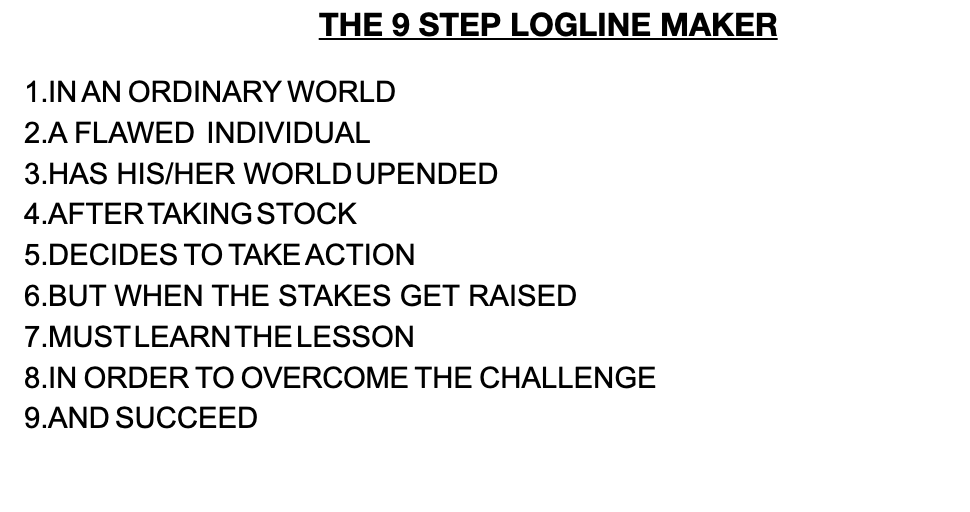
Oprah’s Golden Globes Speech – A great example of using Nested ABTs. Color coded in the ABT format.
Three Forms of the ABT – It’s recommended you read this article and get an understanding of the cABT (Conversational ABT).
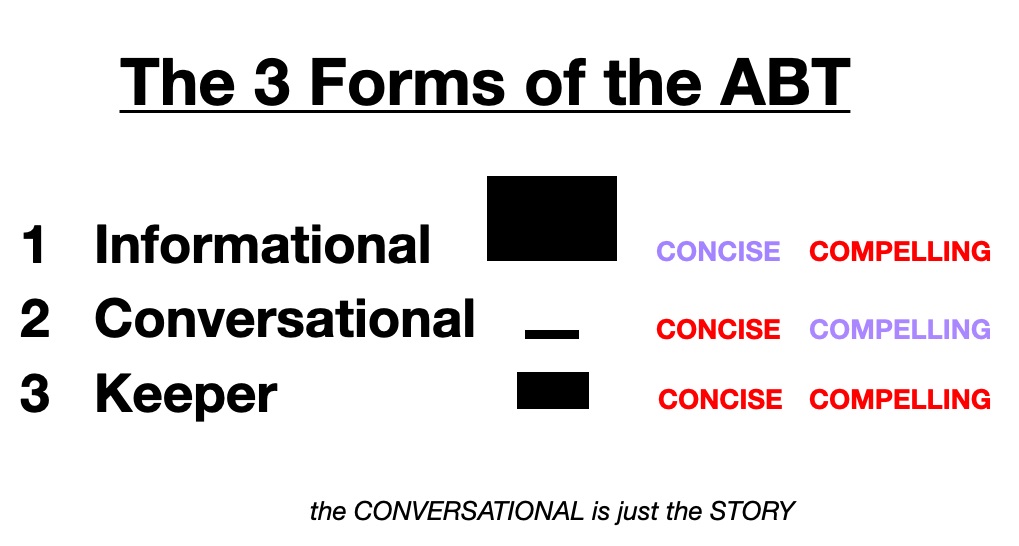
Optional Exercise #3: cABT
Randy might ask you the cABT version of your ABT, so for this exercise you’ll prepare your cABT ahead of time.
The cABT should have all specifics stripped off of it. Use nothing but generic words. For example, if your ABT dealt with a new way to clean junk from the ocean that’s an improvement and the old system is outdated, the cABT would be “We had a method we were using for a while, but it’s not working that great, so now we want to use a better one.”
See? We can’t tell that you’re working on cleaning the environment. You could just as well be telling me that you’re implementing a new accounting system at your bank for all we know. That makes it a good cABT – the specifics are stripped out, leaving just the base narrative. And then from the base cABT, you can start adding specifics again when constructing your kABT.
Session 4 Resources – Archplot
Archplot vs Miniplot summary:
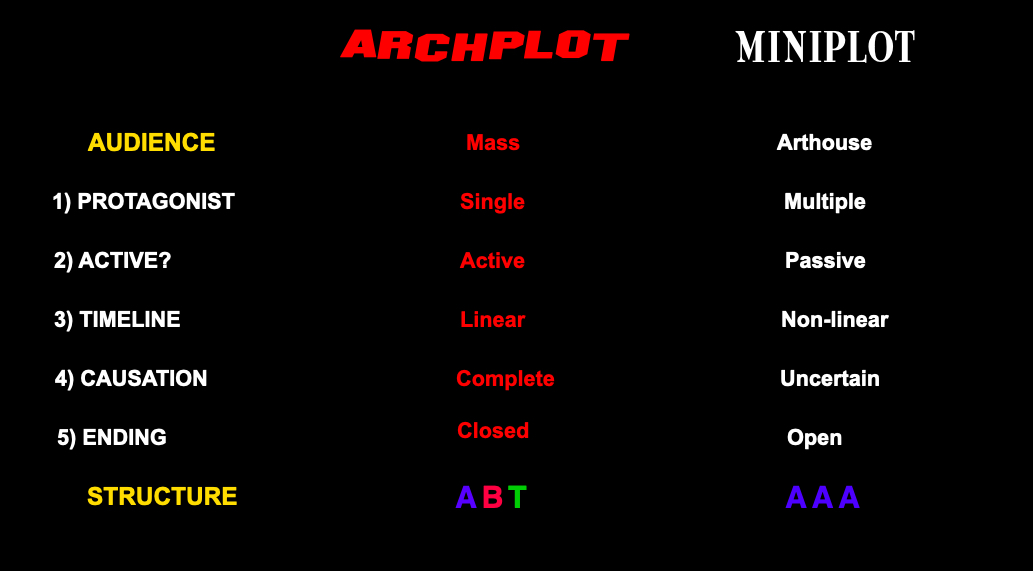
The “Fire Above and Below” episode of the ABT Time Podcast that Randy was referencing:
Optional Exercise #4: Using IF/THEN to draw on the power of the future.
Read about using the IF/THEN tool in “The Narrative Gym” (Chapter 5, print pages 41 thru 47, pdf pages 47 thru 53. Randy emailed all of you a pdf copy of The Narrative Gym. If you can’t find it, email mattmdavid@gmail.com for a replacement).
The IF/THEN tool isn’t applicable for all ABTs, but experiment and see if it is for yours. Try using a positive IF/THEN in the AND to help set the stakes to the Outer Circle of how great everything will be if it goes to plan. Or use a negative IF/THEN in the BUT to show the Outer Circle how bad things can be if everything goes astray. In either case, be as specific as you can to show the Outer Circle what is at stake if everything goes right in the AND or if everything goes wrong in the BUT.
Session 5 Resources – The Fool with Patty Limerick
Fools and Working Circles
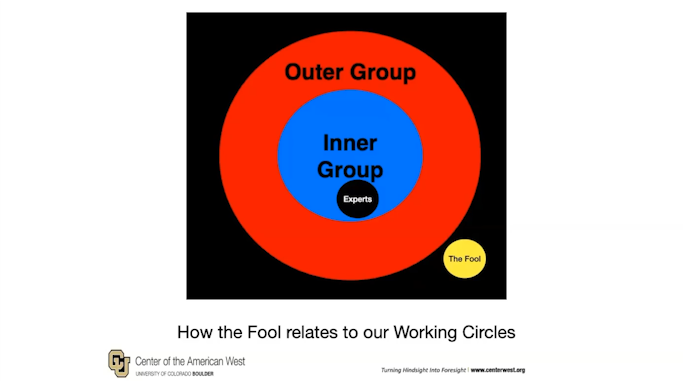
Not My First Rodeo – Patty Limerick’s Blog
Dancing With Professors: The Trouble With Academic Prose – A New York Times article written by Patty Limerick in 1993 about the problems academics have with communication. Still relevant today!
Optional Exercise #5: Maximizing the “turn” into the problem: WHAT/HOW and impact words
Step 3 of the ABT Blue card talks about the WHAT and the HOW for your problem in the BUT, but what does that mean exactly?
Let’s look at this example ABT:
Our storage facility cares for over 200,000 sensitive computer parts that are vital to our company’s sales, BUT poor storage conditions with inadequate temperature, moisture and insect control are allowing deterioration of this hardware, THEREFORE we need to fund construction of a new building to halt degradation before our inventory is lost.
In the BUT for this problem we have a WHAT and a HOW.
WHAT is the problem: deterioration of this hardware
HOW is it happening: poor storage conditions with inadequate temperature, moisture and insect control.
But in the above ABT, the WHAT and the HOW are reversed. You want to make sure the WHAT is at the start of the ABT to maximize the turn from the Ordinary World of the AND to the Special World of the BUT. Hit that audience as soon as possible with the WHAT of the problem so they know exactly what is happening asap. Don’t hide your headline until the end of the BUT and make your audience try to figure out where you’re going.
Example correction:
BUT this hardware is deteriorating due to poor storage conditions with inadequate temperature, moisture and insect control.
And finally, you want to use an impact word in the WHAT that is both accurate and powerful to really grab your audience and let them know what’s happening as directly as possible. In the above example, the impact word is deteriorating, which is good, but is there another word or phrase that might be better (this is where the “art” part of the ABT lies)?
Examples:
BUT this hardware is being destroyed
BUT this hardware is getting corrupted
BUT this hardware is falling apart
BUT this hardware is decaying
Look at your own ABT. Make sure that you have the WHAT and the HOW in the correct order, and then look at your impact word and see if you can brainstorm any that might be both accurate and more powerful. This might be a good exercise to run through with your Working Circle!
Session 6 Resources – Listening with Brian Palermo
Audience focused communication requires listening:
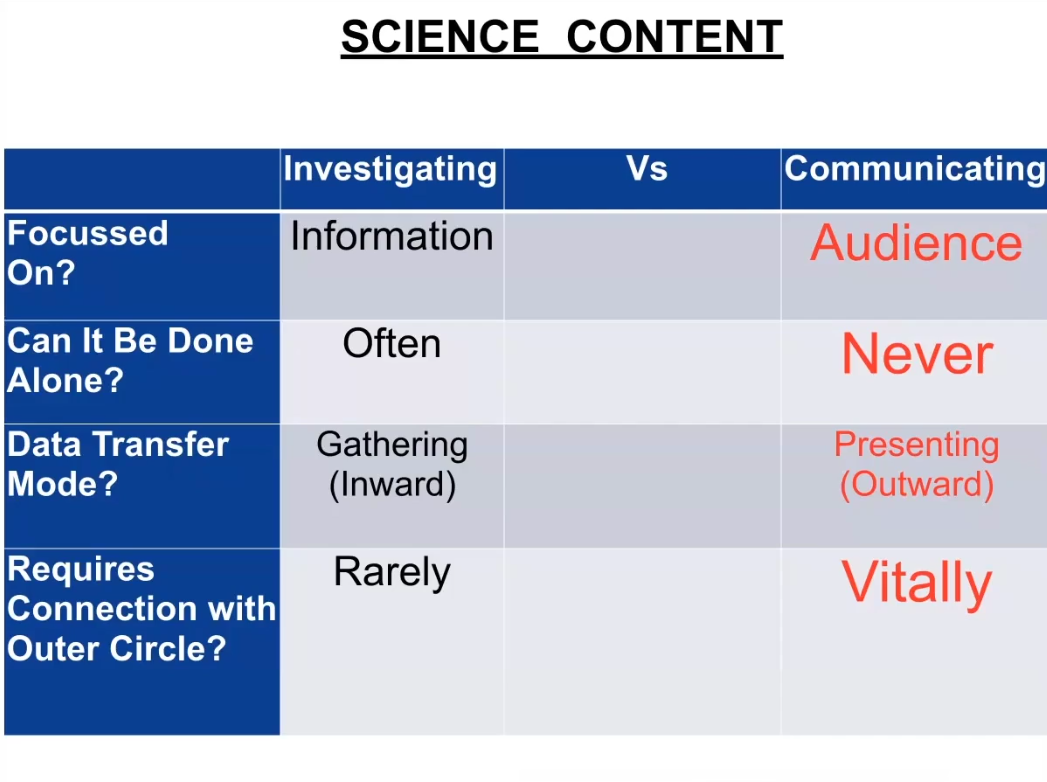
Brian Palermo’s Resources – Brian offers a number of resource videos on his website, some with interactive exercises built in. Topics include listening, utilizing emotional intelligence, and audience focused communication. He also offers online improv training to help improve listening and communication skills.
Session 7 Resources – Audience as Hero with Park Howell
Park Howell’s Business of Storytelling Podcast – Randy has been featured on a number of Park’s podcasts. Here’s the most recent episode with Randy.
Brand Bewitchery: How to Wield the Story Cycle System to Craft Spellbinding Stories for Your Brand – Park Howell’s book on using the ABT and the Hero’s Journey to help market your brand.
Optional Exercise #6: Past, Present, & Future
There’s a few different variations of the kABT. We’ll be looking at one of them here, the Past-Present-Future ABT.
The Past-Present-Future format isn’t applicable to all topics, but we can experiment and see if it is with yours. For your project, craft the AND in a way to tell the audience what was going on before in your project or your old method for addressing a problem. For the BUT, tell the audience the current problem with the old method of doing things. For the THEREFORE, let us know the solution that you’ll be attempting to implement in the future.
The cABT for a Past-Present-Future ABT might look like: “We were doing this one method for the longest time AND it worked well enough, BUT a new issue came up, THEREFORE now we have to fix it by doing a new thing.”
You could also attempt an IF/THEN in a Past-Present-Future ABT, for example: “We were doing this one method for the longest time AND it worked well enough, BUT a new issue came up and IF we don’t fix it THEN it’s going to get really bad, THEREFORE now we have to fix it by doing a new thing.”
Try filling in the details with your own project and make your own kABT using the Past-Present-Future ABT format.
Or fill in the details with facts about your life to make a Past-Present-Future ABT for introducing yourself at parties or networking events: “I was doing this one thing, BUT then a big issue came up, THEREFORE now I’m focusing on this other thing.”
And you can break out the Past-Present-Future ABT if you’re ever put on the spot by your employer with a question on where you’re at with a project at work. cABT: “Well boss, we got all this stuff done and it’s working great, but now we’ve got a new problem, so we’ll be doing a bunch of steps to fix it.” Fill in the details to that cABT on the fly and your boss should be up to speed on what you’re up to.
Session 8 Resources – Genuflect to the Elders with Dianna Padilla
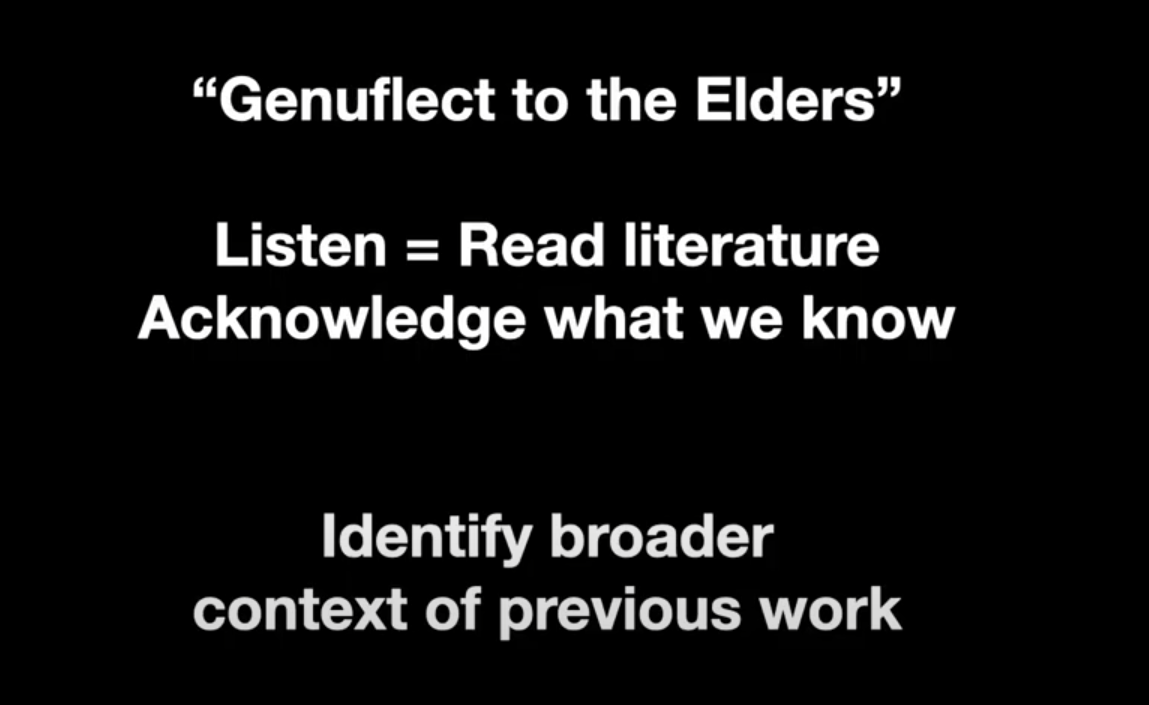
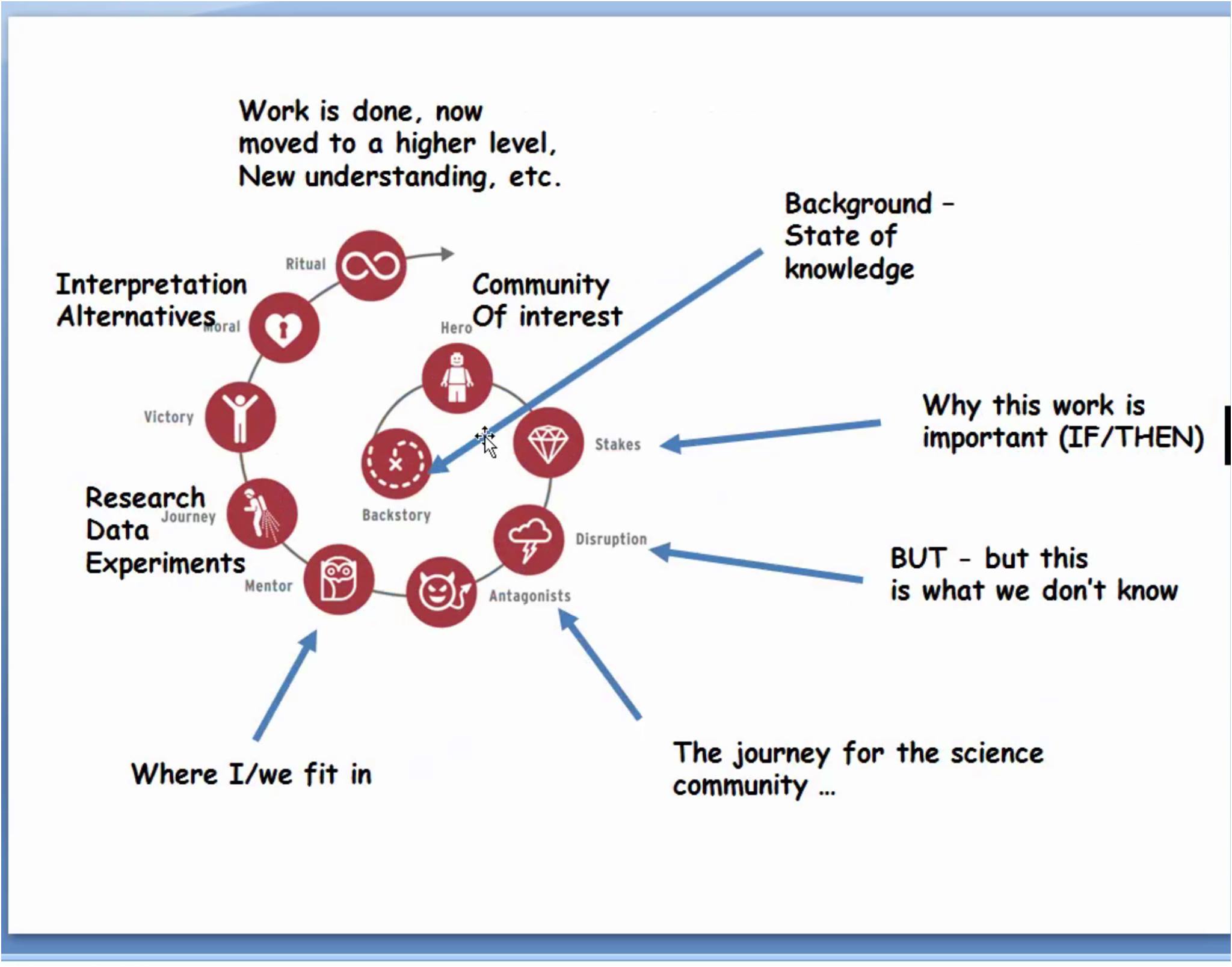
‘Data-Driven’ Campaigns Are Killing the Democratic Party – Find your Christmas Tree problem.
Advice on how women should pitch the “BUT” – A reply by Dianna to a former student’s question about the bias against women when they use the same strategies as men.
Are You Confused by Scientific Jargon? So Are Scientists – A New York Times article recommended by Dianna about how jargon clogs up scientific papers to the point that other scientists can’t understand them. Remember: your Inner Circle is always smaller than you think it is.
Optional Exercise #7: Expected Vs Observed – Leading us to the ideal world
Time to look at a different version of the kABT, the Expected Vs Observed ABT.
The Expected Vs Observed ABT isn’t applicable to all topics, but we can experiment and see if it is with yours. For your project, paint a perfect world in the AND in which everything goes right, what you would Expect from your “ideal world.” Unlike the Past-Present-Future ABT, this time you’re starting the AND out in the ideal, perfect future, not the past. A positive IF/THEN in the AND is often helpful here in really driving home what the stakes are if all goes according to plan.
Then for the BUT, tell us the problem that you’re Observing which is interfering with this perfect world you envisioned in the AND.
Finally, for the THEREFORE, tell us how you’ll lead us out of the problem of the BUT and back to the ideal world of the AND.
A typical Expected Vs Observed cABT: “We’ve got this great project AND IF everything goes to plan THEN we’ll get all kinds of great benefits BUT right now it’s not working because of a problem THEREFORE we need to fix it by doing some stuff.”
Try filling in the details with your own project and make your own kABT using the Expected Vs Observed ABT format.
Session 9 Resources – Narrative Spiral with Nancy Knowlton
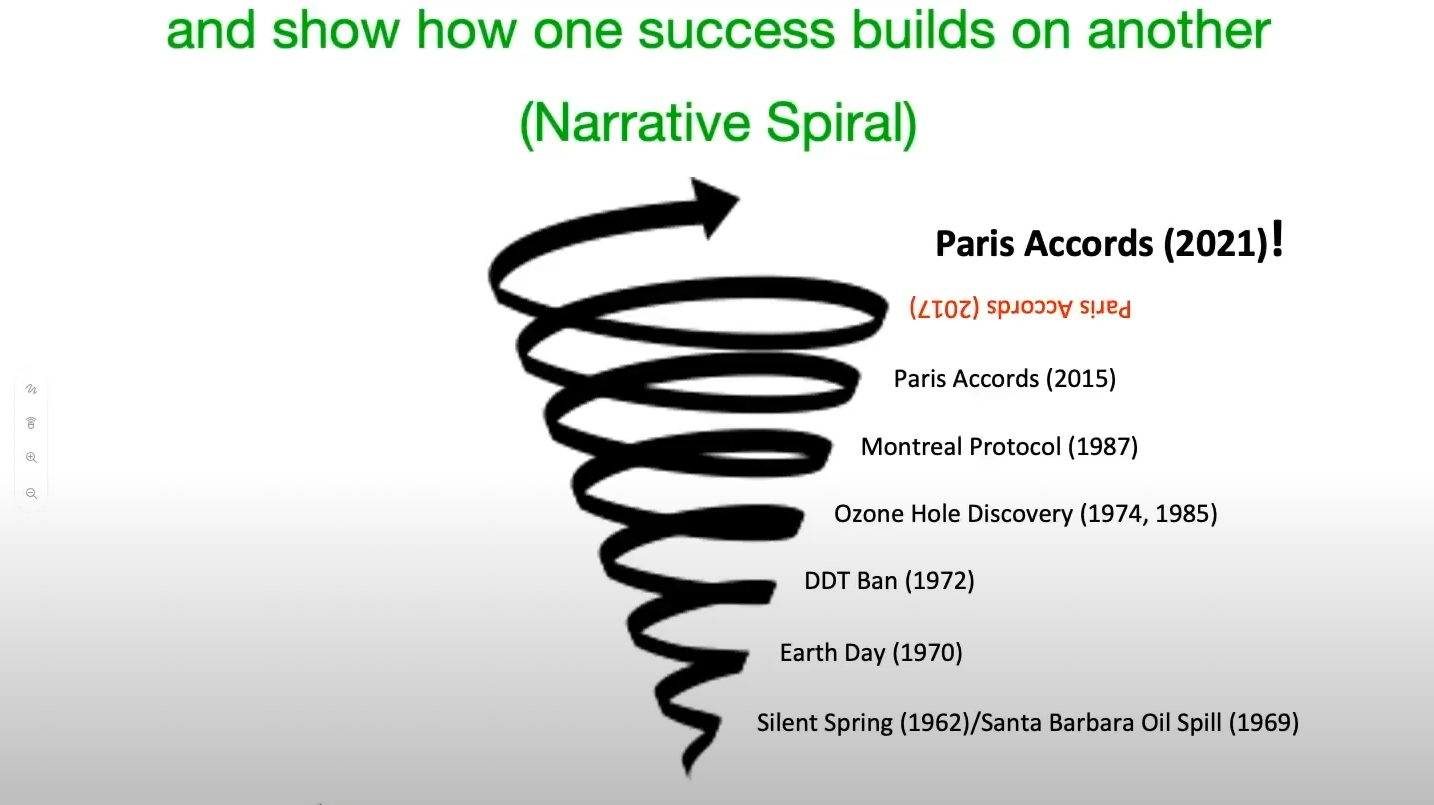
Individuals with greater science literacy and education have more polarized beliefs on controversial science topics – The paper Nancy referenced that shows how science literacy and political affiliation effect belief in controversial topics. Despite what scientists would like to believe, more information isn’t always the right answer.
UN climate reports are increasingly unreadable – This is what we’re fighting against.
Citizens of the Sea: Wondrous Creatures From the Census of Marine Life – Nancy Knowlton’s book.
Earth Optimism – A movement that Nancy is heavily involved in to help highlight the upward rise of the climate movement’s narrative spiral.
Optional Exercise #8: Get specific
Randy always says that the power of storytelling rests in the specifics and if the specifics are relevant to your audience then it can really help bring them on board, but you might lose your audience by going into too many specifics with an iABT, so you have to keep your audience’s attention by picking and choosing the most relevant specifics. This exercise will help you drill down to some possible specifics you could use in your kABT.
First, understand that the category of your topic (environmental, societal, economical, scientific, etc) might be different from the category that your audience cares about – this is where “listen to your audience” comes into play. For example, say you have a topic in the environment category that involves fixing a local environmental issue. But your audience cares more about the economy. So in that case, could you find a specific study that would show the audience the positive economic impact (maybe in tourism dollars) from fixing the environmental issue?
In step two of the ABT Blue Card, the AND is divided into two parts, the WHAT and the WHY. Now for the WHY, try to answer the question of “why should we care?” with something specific to help set the stakes. Answer the below questions that would be most relevant to your audience and topic (or think of your own relevant questions) and try to include the best answer in the WHY of the AND.
- Economical: How important is it to the economy? Do you have a dollar value? How much money does your topic generate?
- Societal: Will people be benefitting, and if so, how? Will quality of life improve? Will employee satisfaction go up? Do you have studies with specific numbers to back this up?
- Environmental: If your topic improves the environment, how will that affect the audience? Do you have any studies or educated estimates to back up how much your topic impacts the environment?
- Scientific: How will the audience be affected by the results of this science? What could this lead to in the future that would be important for them?
- Efficiency: Will a workplace or process become more efficient? Will time be saved? Will money be saved? Do you have any studies on how much things might improve?
- Safety: Will accident rates improve? Any studies or estimates on how much safer things will be?
- Health: Will people be healthier thanks to your topic? In what ways? Do you have numbers or studies to back it up?
Not specific: X is important for a healthy community.
Specific: Studies have shown that communities with X have 20% fewer cases of depression and anxiety.
Not specific: X is important to the local economy.
Specific: X generates $12 million a year in tourism for local businesses.
Not specific: X is important to increasing our understanding of the human brain.
Specific: X will help lead to new methods of fighting depression with better prescribed medication treatments.
In some cases, you might have an important specific that would work better in the BUT or THEREFORE. For example, a study that shows that your organization’s efficiency will drop by 20% if a problem continues would be better suited for the BUT. In that sort of case, feel free to put the specific in the BUT or THEREFORE instead.
Session 10 Resources – Narrative is Leadership
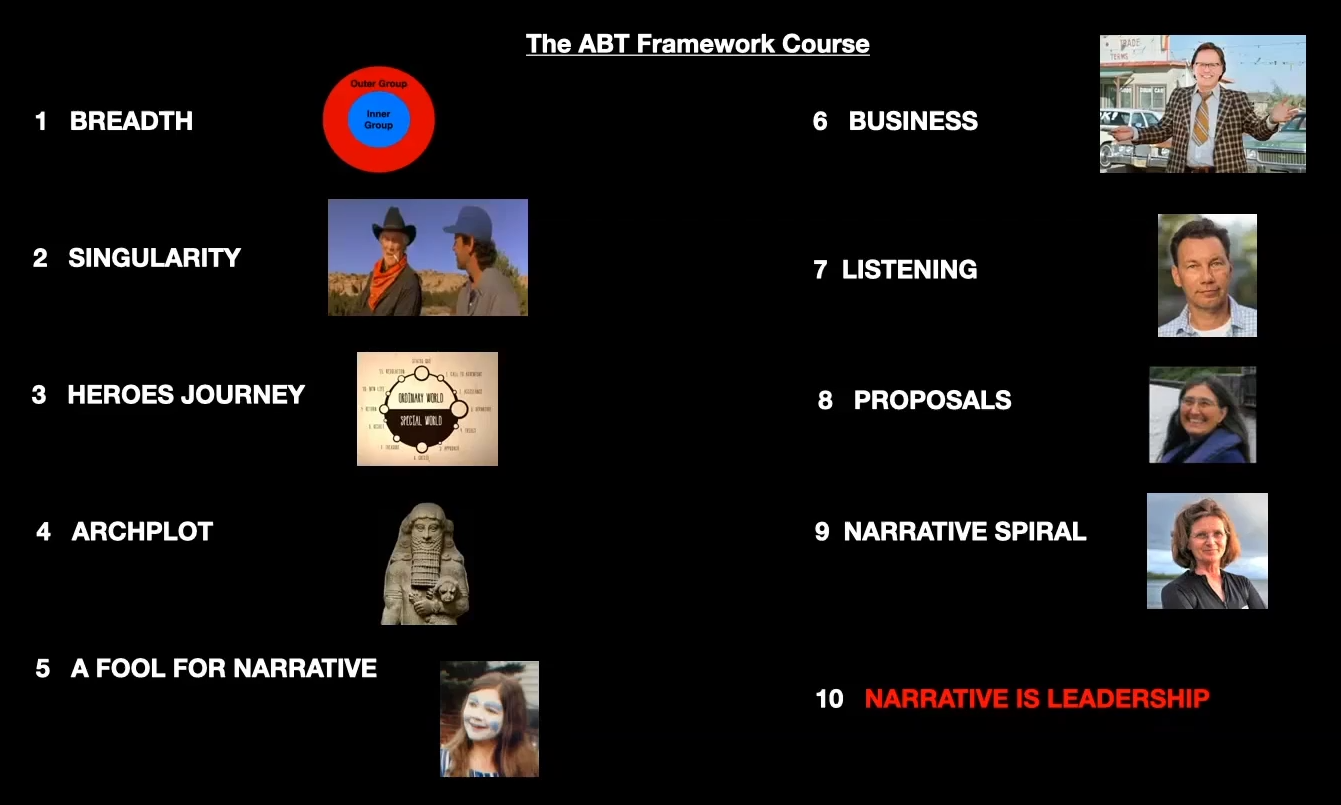
AND Frequency and Narrative Index score ratings:

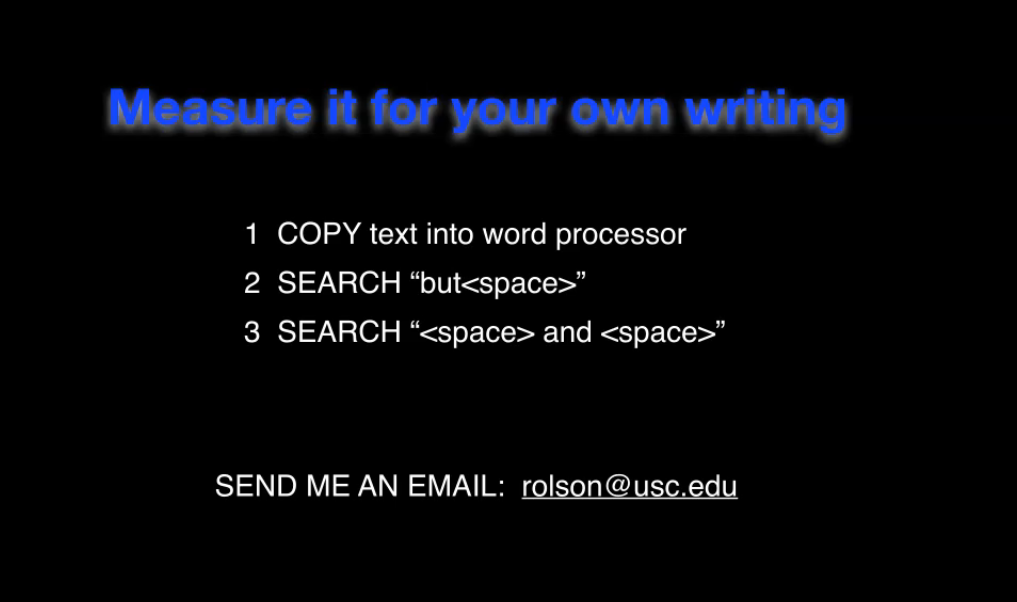
Randy’s Recent Articles:
- Medpage Today: Covid Leadership: Trump Vs. Cuomo
- Scientific American: A New Tool for Humanizing Medicine
- Ensia: Two Decades Ago Climate Communications Missed a Huge Opportunity
Optional Exercise #9: We Know This
Time for another form of the kABT, the We Know This ABT. Once again, a We Know This ABT isn’t right for every topic, but you can try and see if it is with yours.
A We Know This ABT (or as Randy likes to refer to it as, a Wenowdis ABT) is similar to a Past-Present-Future ABT, but this time instead of using the AND to look back at an old method that no longer works, we’re going to the past to look at a method We Know that works.
Set the AND at a place where you’ve seen past ideal circumstances that are similar to our current circumstances. We’re reaching back to the past for proof that we’re on the correct track, for evidence that this plan is the correct one.
The BUT typically involves what’s preventing you from using this great plan that’s always worked before.
The THEREFORE is your fix to get you back on track to your perfect tired-and-true plan.
cABT: “There’s this great process AND WE KNOW when we’ve done it before everything turns out great BUT we can’t use it right now because of a problem THEREFORE we need to fix the problem by doing some things.”
Fill in the details and see if you can make a We Know This ABT from your topic.
The ABT Framework Google Group
We have an ABT Framework Google Group set up for all the current students and alumni of the Course. If you join, you’ll be able to create and submit new Working Circles for brand new ABTs for projects that you’re working on to get ABT feedback from others who have trained in this method. And you can participate in new Working Circles from future classes and alumni submissions to help hone your ABT skills.
To sign up for the ABT Framework Google Group, you can email Matthew (mattmdavid@gmail.com) a Google account email address (i.e. @gmail.com) to be able to visit the page directly. Or you can send him a non-Google address and still participate by receiving email updates from the Google Group whenever new Working Circles are posted.
Science Needs Story – Randy Olson’s Blog.
@ABTAgenda – Follow Randy on Twitter.
ABT Time Podcast – All things ABT, start to finish. In this weekly hour long post Randy will discuss observations, applications and implications of this powerful tool that is at the core of his narrative training program and effective communication of all forms. Livestreamed every Wednesday at 3:00 pm Pacific time on Youtube. Available the next day for audio download.
ABT Framework Course & Story Circles Grads – A private Facebook group just for graduates of the course where you can post about any ABT related topic you find around the ‘net. Once you request access, we’ll let you in.
Story Circles & ABT Training – An open-to-all Facebook Fan page.
The ABT Agenda Newsletter – We send out a newsletter a few times a year with new ABT related events, news, and course updates. If you sign up, we promise not to spam you with tons of junk!
“They Say / I Say” – A book on arguing in an ABT-like style.
Uri Hasson’s Paper on Neurocinematics – For a look at how narrative and non-narrative affects the brain. This paper was referenced in the AAAS video.